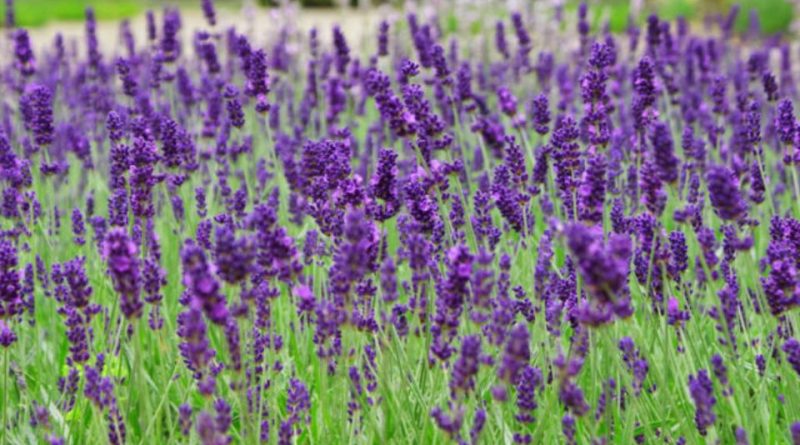Lavandula latifolia
Lavandula latifolia
Spike Lavender (Lavandula latifolia Medik., 1783) is a shrub species belonging to the Lamiaceae family.
Systematics –
From a systematic point of view, it belongs to the Eukaryota Domain, Kingdom Plantae, Sub-Trinchebionta Subdivision, Spermatophyta Superdivision, Magnoliophyta Division, Magnoliopsida Class, Asteridae Subclass, Lamiales Order, Lamiaceae Family, Lavanduleae Tribe and then to the Lavandula and the L. latifolia Species.
Etymology –
The term Lavandula is the diminutive of lavender (from lavo lavaggio) to allude to the fact that these species were widely used in antiquity (especially in the Middle Ages) to cleanse the body. The specific epithet latifolia comes from latus largo, extended and from fólium foglia, referring to the broad leaves of this species.
Geographical Distribution and Habitat –
Spike Lavender is a typical species of the western Mediterranean basin, from Liguria to Spain and Algeria. His presence in Italy is more rare; we find it along the Tyrrhenian coast and the Ligurian Sea to the north. In other parts of the Mediterranean area we find it in France (departments of Alpes-de-Haute-Provence, Hautes-Alpes, Alpes-Maritimes and Drôme). On other European reliefs connected to the Alps it is located in the Massif Central and the Pyrenees and is present between Spain and Algeria.
The typical habitat of this species is represented by arid and bushy slopes on calcareous or calcareous – siliceous substrate with basic pH, low nutritional values of the soil that must tend to be arid. The species grows from sea level up to 1000 m s.l.m ..
Description –
The Spike Lavender is a plant that can reach 3 – 8 cm in height; it is a perennial and woody species, with wintering buds and with shrub or sub-bushy or cespitose-shrubby habit. It is a strongly aromatic species with gray-tomentose garment, due to the presence of stellate hairs and is distinguished from officinal lavender because the latter has narrower leaves.
It has secondary rhizome roots with the aerial part of the woody stem, erected with a pubescent surface, while the upper part is branched with young herbaceous-type branches.
The leaves, which have a width of 2 – 5 mm, are arranged in the opposite way with whole lamina, spatulate outline and attenuated base towards the petiole; the apex varies from dull to acute; the margins are reversed. The leaves are fragrant and persistent and smaller tufts of leaves are inserted into the axilla of the same.
The inflorescences are ears of 3 – 8 cm, with pale blue flowers with a camphorated aroma, arranged in whorls (from 6 to 12 flowers) more or less long pedicellated and spaced. In the inflorescence there are bracts with a herbaceous consistency with linear to lanceolate forms with a single central rib.
The anthesis is between June and July, but it can last even longer. The fruit is a schizocarp composed of 4 hairless and smooth nuculas that are provided with areolas and have various shapes, sizes and colors. Dehiscence is basal or lateral.
Cultivation –
Spike Lavender requires areas in full sun and temperate climates for its cultivation. However, being a rather rustic essence, it grows well in all types of soils even if it prefers light ones. It is a species not very demanding of water but in times of prolonged drought it requires regular water supplies.
Reproduction can take place by seed or cuttings. Sowing, direct on the field, takes place in the spring. Propagation by cuttings in late summer or late winter.
For the details of the cultivation technique, see the following sheet.
Uses and Traditions –
Lavandula latifolia, also known as Lavender with broad leaves, Spigo or Spigone, like other aromatic plants, has considerable uses in the field of medicine, as well as food.
According to popular medicine this plant has the following medicinal properties: antibacterial (blocks the generation of bacteria); antiseptic (property of preventing or slowing the development of microbes); antispasmodic (reduces muscle spasms, and also relaxes the nervous system); carminative (favors the escape of intestinal gases); emmenagogue (regulates menstrual flow).
Spike Lavender is a melliferous plant and honey can be produced; however, being a plant not very widespread, except in the orchards and gardens, it is possible to obtain honey with occasional and difficultly monofloral production.
This lavender is also used for the extraction of essential oil, in incense packaging and as an insect repellent. The flowers are used for the fragrance of linen.
Preparation Mode –
Lavandula latifolia is also used in the kitchen; its flowers are edible and can be used in the preparation of biscuits, cakes and added to risottos, gnocchi.
Guido Bissanti
Sources
– Acta Plantarum – Flora of Italian Regions – Wikipedia, the free encyclopedia – Treben M., 2000. Health from the Pharmacy of the Lord, Advice and experiences with medicinal herbs, Ennsthaler Publisher – Pignatti S., 1982. Flora d ‘Italy, Edagricole, Bologna. – Conti F., Abbate G., Alessandrini A., Blasi C. (edited by), 2005. An annotated checklist of the Italian vascular flora, Palombi Editore.
Attention: Pharmaceutical applications and food uses are indicated for informational purposes only, do not in any way represent a medical prescription; therefore no liability is accepted for their use for curative, aesthetic or food purposes.


